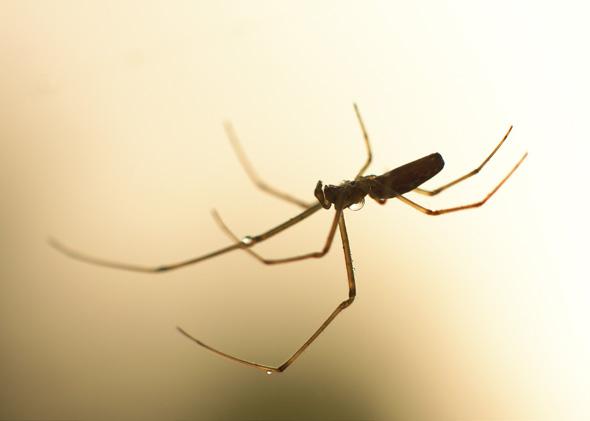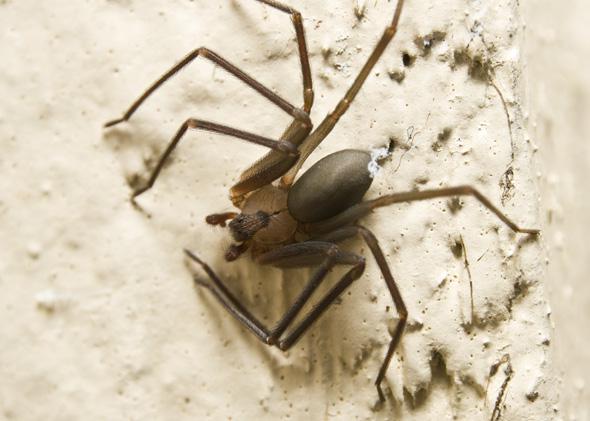In June, a friend told me a story about a spider attack he had suffered in a well-maintained Connecticut guestroom. The spiders, he said, had ravaged him—they covered his legs in itchy red welts. On a subway ride a month later, another friend described her boyfriend’s cousin’s infected brown recluse bite. Then there were the Facebook posts—for most of the summer and into the fall, my feed was filled with spider bite complaints. Some had photographic evidence. Others described medical interventions, including rounds of antibiotics. Most exclaimed some form of “Ugh!” or “Yuck!” or expletives I won’t repeat here.
These reactions aren’t unusual. According a Gallup poll of greatest American fears (albeit an old one), spiders and insects land fifth on the list, following snakes, public speaking, heights, and “being closed in a small space.” A more recent poll suggests that the second biggest fear for young people in the United States is spiders, right after terrorist attacks and before dying. And we’ve blamed spiders for treacherous bites for centuries at least—in medieval Europe, spiders were blamed for spreading plague, an infectious disease that was later correctly linked to the flea.
If most historical and modern spider stories are to be believed, it would appear that these creatures spend their time plotting assaults on your delicious human flesh. But I’m here to tell you they emphatically do not.
Do spiders occasionally bite a human? Sure, it happens. But consider the facts. Of the roughly 44,000 known species of spiders on this planet—out of an estimated total of 170,000—not one feeds on human blood. Unlike a mosquito, a bedbug, or any other blood-feeding arthropod, spiders have no reason to intentionally seek out or bite a person. Instead, their bites are aimed at insects or, rarely, small vertebrates such as fish or birds. Spider bites serve to immobilize such prey to make it easier to eat.
When a spider does bite a person, it is usually either an accident or self-defense. Perhaps, for example, that spider is hanging out on a woodpile or in a piece of clothing. Without looking, you grab a log or pull on your pants. Caught by surprise, with nowhere to escape, the spider bites.
The good news is that very few spiders have venoms that are dangerous to humans. In fact, there are only two major groups of such spiders in the United States—widows (Latrodectus) and recluses (Loxosceles). Confirmed bites from both are rare.

Photo by Shutterstock
The bad news is that misdiagnosed recluse spider bites, which are quite common, may keep doctors from properly treating the true source of a suspected bite. (Widow bite symptoms are easier to spot.)
According to Rick Vetter, a retired entomologist from the University of California–Riverside, medical conditions that may be mistaken for a recluse bite include: bacterial infections, Lyme disease, fungal infections, viral infections, various skin disorders, ulcers, and skin cancer. Doctors, Vetter says, often make a “garbage can diagnosis” by saying a red mark or lesion is a spider bite, which means the actual problem is left untreated.
So, how can you tell whether those itchy red splotches or sores came from a spider? There’s no way to be certain, Vetter says, unless you catch the spider in the act.
However, he adds, one clue is the presence of multiple bites. “Spiders rarely bite more than once.” If you wake up with many welts, it is more likely that you have bed bugs, fleas, a bacterial infection, or something else entirely. “People need to give up on the spider nonsense. They just don’t bite very often.”
